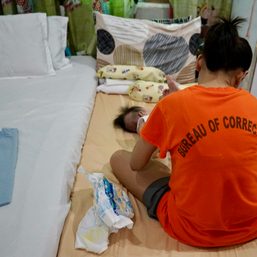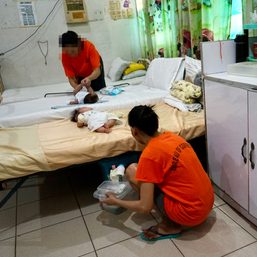SUMMARY
This is AI generated summarization, which may have errors. For context, always refer to the full article.
![[OPINION] Digitalization and enhanced data governance for Filipino women’s political participation](https://www.rappler.com/tachyon/2023/03/20230307-digitalization-women-politics-philippines.jpg)
Women’s political participation is a fundamental factor for gender equality and development, as it facilitates their direct engagement in public policy and decision-making. Globally, studies have shown that higher numbers of women in leadership positions in government generally contribute to stronger gender-responsive and inclusive governance.
In the Philippines, the status of Filipino women has significantly improved in terms of development indicators and in their participation as active voters. More than the half of the country’s population is female. However, the past few elections in the last two decades showed a significant gap between the number of men and women as elected leaders of the country.
A quick glance at the status of Filipino women and their political participation generates an interesting outlook.
The Philippines is ranked high in terms of gender equality globally as indicated by its Gender Development Index (GDI). The Philippine GDI has constantly been higher than the global index since 1990 (when it was at 0.931 compared to the global GDI of 0.899) until 2021 (when it was at 0.99 compared to the global GDI at 0.958). In 2021, the Philippines had been placed in Group 1, which is comprised of countries with high gender equality.
Based on the Commission on Elections (Comelec) data from 2016 to 2022, the percentage of females among all registrants has consistently been at least 50%. Voter turn-out among women has also remained high from 2010 to 2022, with consistently at least 75% of registered women voters casting their votes on election day.
Overseas, women’s active participation can also be observed in the latest available Comelec data. Registered voters and actual voters overseas in the 2019 elections were mostly female, both at around 60%. Furthermore, voters’ turnout among female registrants in the same elections was at 33%, while that among males was at 29.4%.
In gist, women have, historically, been active participants in the electorate since the dawn of women’s suffrage. This type of participation does not extend beyond voting, however, as participation of women as candidates for elective positions in the country has remained low.
![[OPINION] Digitalization and enhanced data governance for Filipino women’s political participation](https://img.youtube.com/vi/VESIb_9QqhI/sddefault.jpg)
Over the past five automated elections, although the percentage of women candidates had steadily increased from 16.7% in 2010 to 20.6% in 2022, these figures translate to only having one for every five candidates being a woman. The percentage of women among those elected also had increased from 18.5% in 2010 and 23.3% in 2022, yet is still below parity.
This does not paint the whole picture. We would like data to be further nuanced, made more comprehensive, and real-time. With current technologies and systems in the Comelec, arriving at these data can take a while. By digitalization and better management, use, and communication of data, a comprehensive understanding of the trends and gaps in political participation among women and men may be further achieved in a quicker and more efficient manner. With timely and accurate data, the push for having empowered women participating as political leaders and having a well-informed voting population can be supported.
The United Nations Development Program (UNDP) in the Philippines and the Comelec have partnered to enhance the digitalization capacity to better highlight the roles of women in the political arena. Particularly, through the partnership, data-driven and online solutions will be developed to get timely and accurate insights to help identify challenges or barriers in women’s political participation. These insights would then inform solutions on how to address these barriers, and encourage equality and equity among women and men, including disadvantaged groups, through policies, data-informed decisions, or capacity-building.
Ultimately, the goal of the joint Comelec-UNDP initiative is to nudge more responsive and timely decisions that would build the foundation for electoral policies, systems, or processes that empower women to step up both as voters and as leaders in the effort to equalize representation.
Tides might be turning to support more women in joining the political arena. However, without the comprehensive deep dive that digitalization and better electoral data governance can bring, we will not be able to have a more complete picture of the gendered electoral processes and networks beyond the mere glance that surface data suggests. – Rappler.com
George Erwin M. Garcia is chairperson of the Commission on Elections.
Dr. Selva Ramachandran is UNDP Philippines’ resident representative.
Add a comment
How does this make you feel?





There are no comments yet. Add your comment to start the conversation.